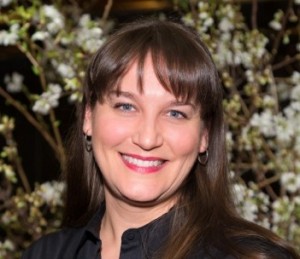【RocketNews24】Eight Japanese words we’d love to import into English
Posted by Michelle Lynn Dinh (Shimane-ken, Chibu-mura, 2010–13), editor and writer for RocketNews24. The following article was written by Casey Baseel, a writer and translator for RocketNews24, a Japan-based site dedicated to bringing fun and quirky news from Asia to English speaking audiences.
Recently, we talked about how Japanese, while a tough language to learn, isn’t quite as difficult as some horror stories make it out to be. Still, if English is your native language, certain Japanese grammar rules, like saying “wa” and “o” to mark the subject and object of your sentences, can seem like a major hassle.
With practice, though, these things start to become automatic. Even better, the Japanese language is filled with incredibly handy phrases that we’d love to import into English.
JET alum Michael Auslin’s commentary on NATO’s relevance in Forbes
 JET alum Michael Auslin, Resident Scholar and Director in Asian and Security Studies at the American Enterprise Institute, has a new article in Forbes magazine titled “No Need to Argue for NATO’s Relevance.”
JET alum Michael Auslin, Resident Scholar and Director in Asian and Security Studies at the American Enterprise Institute, has a new article in Forbes magazine titled “No Need to Argue for NATO’s Relevance.”
http://www.forbes.com/sites/realspin/2014/04/04/no-need-to-argue-for-natos-relevance/
JQ Magazine: NY JET Alum Collaborates with Japanese Expats on ‘2nd Avenue’
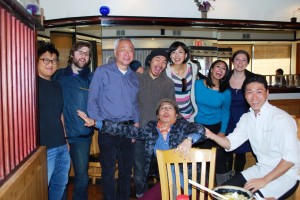
JET alum Tony Waldman (second from left) on the set of Web series 2nd Avenue. (Courtesy of Tsukasa Kondo)
By Julio Perez Jr. (Kyoto-shi, 2011-13) for JQ magazine. A bibliophile, writer, translator, and graduate from Columbia University, Julio is currently working at Ishikawa Prefecture’s New York office while seeking opportunities with publications in New York. Follow his enthusiasm for Japan, literature, and board gaming on his blog and Twitter @brittlejules.
She’s an aspiring actress with visa problems; he’s a gay law student and newly homeless. Can a fake marriage solve their problems? Mariko and Taichi are the stars of a goofy Web comedy filmed on location in New York called 2nd Avenue. You can tune into their zany adventures on YouTube and view the entire six-episode first season, which ended this past February.
The creative team behind 2nd Avenue includes Mari Kawade (director), Maho Honda (who plays Mariko), and Tsukasa Kondo (who plays Taichi). Kondo, who also is the writer for the series, was inspired by the many Web series online and decided to try writing something that would never be seen on Japanese TV, but would have a place on YouTube. He adds that his biggest inspirations for the story are “the actress Maho Honda, my life in New York as a gay man, and American TV shows.” Honda and Kawade also cite the diversity of New York City itself, and the stories of what people do just to survive in it, as a significant creative inspiration.
As you may have guessed, you can’t do something awesome involving Japan in New York without some JET alumni getting involved. Tony Waldman (Mie-ken, 2005-09) and his group New Beard provide the soundtrack for the show. The idea for this pairing took root after he met Kawade at the JET Alumni Association of New York’s annual Meishi Exchange event in 2013.
“She mentioned that she was looking for music for this Web series,” Waldman says. “We exchanged contact info and kept in touch. Many months later, she…asked if we could use my band New Beard’s music in the show. Us here in Beard Town (Williamsburg) gave her the OK, and our music became the soundtrack to the entire show…a true JETAANY Meishi Exchange success story!”
【RocketNews24】You know you’ve been in Japan too long when…
Posted by Michelle Lynn Dinh (Shimane-ken, Chibu-mura, 2010–13), editor and writer for RocketNews24. The following article was written by Philip Kendall (Fukushima-ken, Shirakawa-shi, 2006–11), senior editor and writer for RocketNews24, a Japan-based site dedicated to bringing fun and quirky news from Asia to English speaking audiences.

So you’ve been living, lounging, working, or studying in Japan for a while now. The feelings of homesickness you first experienced are but a distant memory, and whenever you Skype with your family, you unconsciously use the word “home” to refer to your place in Japan rather than your home country. Not only that, you can finally navigate the Tokyo Metro without getting flustered, barely even notice when a girl dressed in kimono passes you in the street, and you think nothing of visiting a convenience store two or three times a day, sometimes just to flick through the magazines.
But what about all of the things you do unconsciously or that seem so normal to you now but would make you stop and stare back home? Today, we bring you a list of 10 moments that, if and when they happen to you, you can safely say, “Wow, I’ve been in Japan too long.”
Justin’s Japan: Nippon in New York — Miyazaki, Godzilla, Tribeca Film Festival, Sakura Matsuri
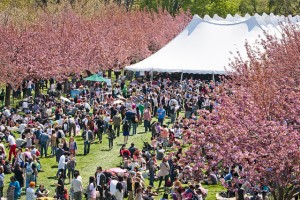
New York’s 33rd annual Sakura Matsuri will be held at Brooklyn Botanic Garden April 26-27. (Mike Ratliff)
By JQ magazine editor Justin Tedaldi (CIR Kobe-shi, 2001-02) for Examiner.com. Visit his Japanese culture page here for related stories.
Spring has sprung in the Big Apple, and that means one thing: a new season of sounds, colors, and spectacular performing arts to match the blossoming sakura trees throughout the city.
This month’s highlights include:
Tuesday, April 8
Turning Point: 1997-2008 by Hayao Miyazaki
MSRP $29.99, $34.99
The companion second volume to the earlier chronicleStarting Point: 1979-1996 (also new in paperback),Turning Point is an insightful collection of essays, interviews, memoirs, and illustrations from legendary animation director Hayao Miyazaki. The new title covers the critical stage in the legendary director’s career when his animated films for Studio Ghibli such as Princess Mononoke, Spirited Away, and Ponyo began to garner a significant international audience. Turning Point follows Miyazaki as his grand vision continued to mature, cinema-lovers worldwide discovered and embraced his creations, and prominent film critics such as Roger Ebert delivered tremendous acclaim for the director’s films. Bringing us up to the present is The Art of The Wind Rises, which captures the art of the film from conception to production, featuring in-depth interviews with the creative team from Miyazaki’s latest—and supposedly final—Academy Award-nominated epic.
April 8-13, 8:00 p.m. and 10:30 p.m.
Gary Burton & Makoto Ozone Duets
Blue Note Jazz Club, 131 West Third Street
$20, $35
Born in Kobe to a jazz organist father, Makoto Ozone came to Boston in 1980 to study at the Berklee College of Music, where multi-Grammy Award-winning vibraphonist Gary Burton was a composition and percussion instructor. After graduation he made his first American solo appearance in 1983 with a recital at Carnegie Hall. The incredibly talented young man struck a record deal with CBS, making his international debut in 1984 with the album OZONE. Burton and Ozone have been collaborators in the duet format for over two decades and recorded the Grammy-nominated Virtuosi in 2002. The versatile Ozone has hosted a TV series in Japan, ventured into electronics, and composed for and played with classical orchestras in addition to working with his own jazz trio from his home in New York.
Wednesday, April 9, 8:00 p.m.
Carnegie Hall, 881 Seventh Avenue
$22.50-$140
Praised by the New York Times when she last appeared at Carnegie Hall as “among the most respected artists of our time” for her “probing and magisterial performances” of Schubert’s last three sonatas, pianist Mitsuko Uchida returns to perform his “Reliquie” Sonata, once mistakenly thought to be the composer’s final work. Also on the program is Beethoven’s all-encompassing and transcendent Thirty-Three Variations on a Waltz by Diabelli.
For the complete story, click here.
Kyodo News “JET Alumni” Series: Dominic Abordo (Akita)
News agency Kyodo News has recently been publishing monthly articles written by JET alumni who were appointed in rural areas of Japan, as part of promotion for the JET Programme. Below is the English version of the column from February 2014. Posted by Celine Castex (Chiba-ken, 2006-11), currently programme coordinator at CLAIR Tokyo.
********
Originally from San Francisco, CA, Dominic Abordo (Akita-ken, Kosaka-machi, 2008-11) holds a Bachelors Degree in English Literature with a minor in East Asian Languages from Berkeley University. He spent three years working as a Coordinator for International Relations (CIR) in rural Akita before enrolling in a Master’s degree in Social Work from Columbia University, NY. He currently works as a Freelance Consultant in Social Work in New York.
A “Big City Boy” in Snow Country
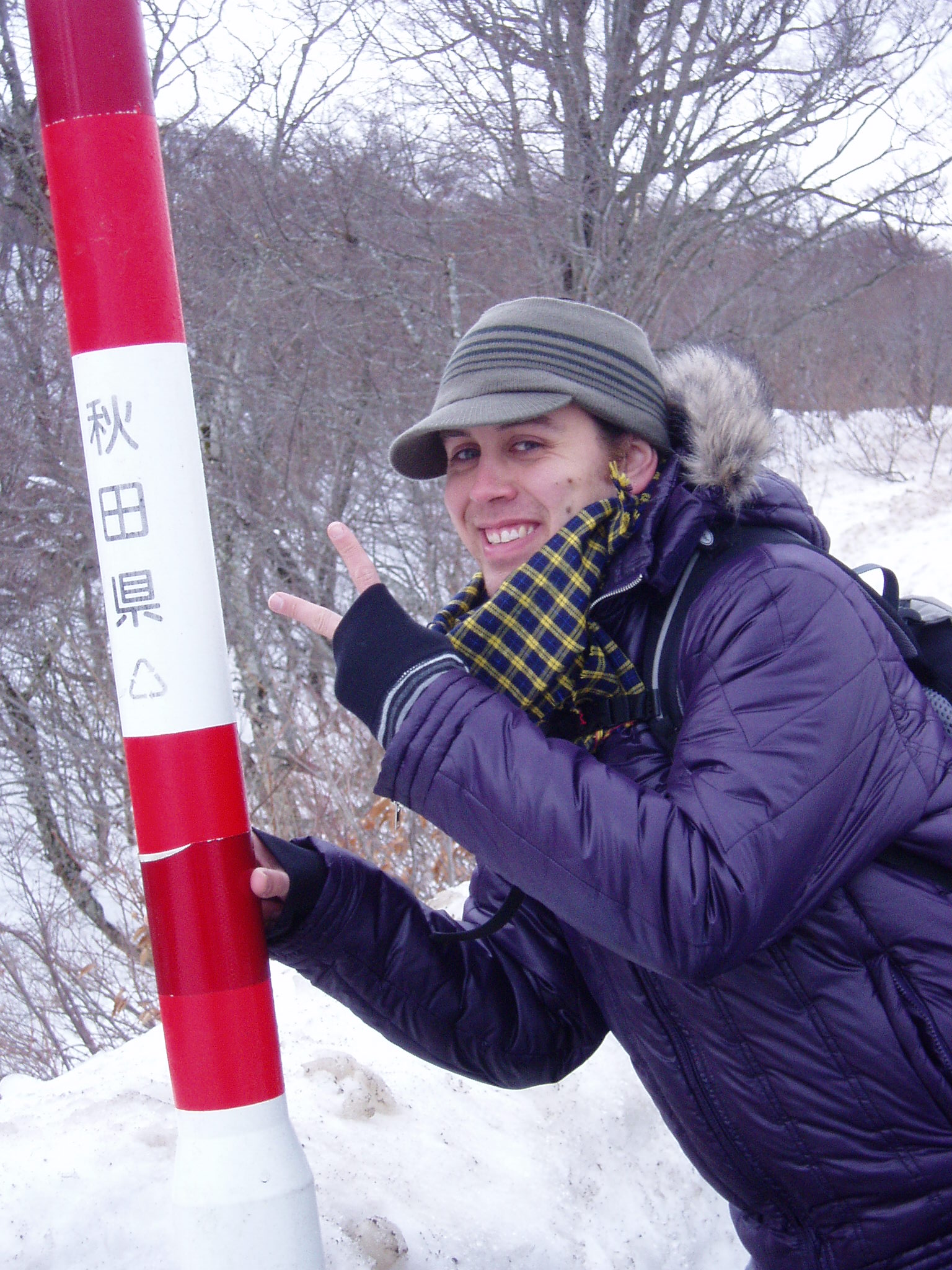
“The one thing that I will continue to share with my friends and family is that the people of the small town of Kosaka-machi have some of the biggest hearts in the world.”
Akita (əˈkiːtə), noun: 1. one of the northernmost prefectures on the Japanese island of Honshu; 2. the prefecture that I, Dominic Abordo, called “home” for three years.
If you ask the average American about Japan, it is highly unlikely that Akita Prefecture – a gem of the Tohoku Region famous for heavy snowfall, rice, kiritanpo, and sinister mountain demons called namahage – will be included in his or her response. Despite living in Japan for three years prior to the JET Programme, I, too, knew very little about my future home. Thus, I was admittedly nervous when I first arrived in Kosaka-machi, a small town of approximately 6,500 people located in the northeastern corner of Akita. I assumed that my time as a Coordinator for International Relations (CIR) would be full of new adventures, challenges, and opportunities, but I had no idea that the experience would have such a positive and lasting impact on my future.
Although it took almost one year to master the local dialect, Kosaka-machi soon became a second home to me. The natives were eager to introduce me to the natural beauty and hidden treasures of their hometown, including landmarks such as Nanataki Waterfall, Lake Towada, and the Korakukan kabuki theater. They often accompanied me to the best restaurants, bars, and izakaya in the area, sharing personal stories about their families, jobs, and travel experiences over a meal or a few drinks. Elementary school students and adults alike offered warm greetings when we ran into each other around town. Perhaps most importantly, they did everything they could to make sure that I was happy, healthy, and an active part of the community. Little did I know that my love for dance, music, and performing arts would enable me to form lasting connections with so many of them. Read More
JQ Magazine: From JET to Japan-Related Jobs – New York Edition
By Brett Rawson (Akita-ken, 2007-09) for JQ magazine. Brett is a writer, translator, and volunteer. He currently lives in New York, where he is pursuing an MFA in creative writing at The New School and is the professional development chair for the JET Alumni Association of New York. If you have job opportunities for JET alums, an interest in presenting at JETAANY’s annual Career Forum, or want to collaborate on professional endeavors, contact him at career@jetaany.org.
If you listen closely, the age-old JET adage every situation is different can be heard echoing around the world. This is because it’s said so frequently, but that’s because there is truth to the takeaway: Paths to JET, experiences in Japan, and adventures thereafter run in every direction. But when the stories sit side by side, a greater context for, character of and meaning to the program and participants, takes solid shape.
Below are features on three New York City-based JET alumnae. Each carved a unique path to, on, and from the program, but they share one incredible thing in common: they are working at three of the largest Japan-related non-profit organizations in the world. For those interested in following in their professional footsteps, JQ would like to introduce to you them and share their advice about entering the world of Japan-related non-profits.
Meet Christy Jones, Director of Special Events at Japan Society
ALT, Shimabara-shi, Nagasaki-ken, 1995-98
Born and raised in Upstate New York, Christy received a degree in cultural anthropology and a certificate in Asian and African Languages and Literature from Duke University. That was the closest she could get to a degree in Japanese, but it wasn’t the closest she got to Japan: Her junior year, she studied abroad at Kansai Gaidai University in Osaka. But that stint didn’t quite quench her thirst for the cuisine and culture. The following fall, she applied to JET, got accepted, and returned to Japan—but this time for three years.
Christy served as an ALT at an academic high school in Shimabara-shi in Nagasaki. Thinking back, she has very fond memories of her time on JET: “As this was the pre-Internet era, I didn’t know much about Nagasaki beyond the atomic bomb,” she says. “I came to appreciate the rich international history of the area, along with the stunning natural beauty. Some of my happiest moments were traveling around Kyushu, visiting fellow JETs in their own towns, checking out the local onsens, cafes, and izakayas, and taking thousands of photos. I was befriended by a number of local residents, which allowed me to have some uniquely Japanese experiences: delivering mail as an honorary ‘Postlady for a Day’; making yakimono in a backyard pottery studio and kiln; watching a bonfire-lit Noh performance at the base of a castle; and marching in the city’s annual parade dressed like a Portuguese missionary.”
When Christy returned home, she let her experience settle. “Eventually,” she recalls, “I visited NYC to attend JETAANY’s annual Career Forum, which happened to be held at Japan Society that year.” She connected with a couple of headhunters and landed a job working as an administrative assistant for a subsidiary of Sumitomo Chemical for two years, but the work itself didn’t fulfill her: “My workday ended at 5:30 sharp, so I started volunteering at the nearby Japan Society events as an usher and ticket-taker,” which is when everything began to change.
【RocketNews24】There’s something about sakura: It’s hard not to fall in love with Japan’s cherry blossom【Videos】
Posted by Michelle Lynn Dinh (Shimane-ken, Chibu-mura, 2010–13), editor and writer for RocketNews24. The following article was written by Philip Kendall (Fukushima-ken, Shirakawa-shi, 2006–11), senior editor and writer for RocketNews24, a Japan-based site dedicated to bringing fun and quirky news from Asia to English speaking audiences.
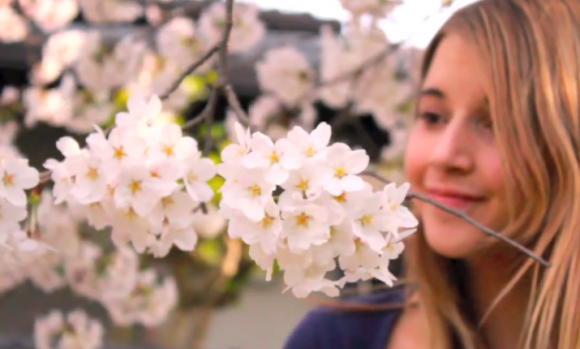
Spring has arrived in Japan, and that can mean only one thing: Hanami, or cherry blossom viewing parties! But what is it about hanami, and those pretty pink petals in general for that matter, that manages to capture the hearts and minds of so many?
Let’s take a look at a handful of videos that capture the mood of hanami season perfectly and see if we can pinpoint exactly what it is that makes the season so special!
CLAIR Magazine “JET Plaza” Series: Caroline Klee (Kagawa)
Each month, current and former JET participants are featured in the “JET Plaza” section of the CLAIR Forum magazine. The April 2014 edition includes an article by JET alumnus Caroline Klee. Posted by Celine Castex (Chiba-ken, 2006-11), currently programme coordinator at CLAIR Tokyo.
***********
Born to a French father and a Japanese mother, Caroline Klee (Kagawa-ken, 2000-03) was raised in Tokyo until the age of 15 and considers herself an “Edo-ko” (Tokyo girl). After graduating from a business school and working several years in Paris, she decided that she wanted to go back to Japan to live and work there and joined the JET Programme as a CIR. She then moved to Vancouver to become an Activity Coordinator at an English language school, before coming back to Japan in 2008. She has been working in Tokyo ever since and is now Director for Domestic and International Events for a Healthcare Communication Agency. When she is not travelling around the world with her job, Caroline enjoys fishing in the open sea in the Tokyo Bay area, and cooking tasty meals for friends and family.
So much more than Udon…
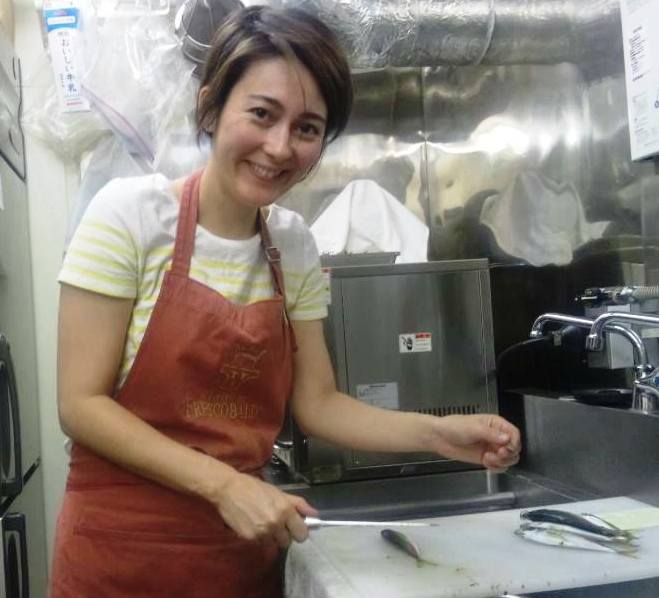
“My three years in Kagawa are my treasure, and I am filled with gratitude towards all the people I was able to meet there”
Everything started with an encounter. After leaving my job in Paris, I was living back with my mother in Strasbourg and was thinking
of working in Japan, where I used to live when I was a child. My mother came back one day from her interpreting job, saying “I met someone who is doing a job that would suit you perfectly.” Oh really?! She had met a Belgian CIR who was on a business trip in our town with a group of colleagues who were interested in the city tram system. So this is how I found out about the JET Programme. I applied and was lucky enough to be sent to Kagawa.
Where is it? I still remember the following phone conversation with my parents. After applying for JET I decided to travel to Tibet, and I was in Lhassa when my parents received a letter with information on my placement. First, my father told me on the phone “You are going to be placed in Kanagawa.” I heard a shuffle on the other side of the line as my mother grabbed the phone. “No, not at all. You are going to be placed in Ka-ga-wa, not in Kanagawa.” My first reaction was “What? But where is Kagawa?” And my mother answered without answering. “Oh, you will be fine. Udon is very good over there and you will be able to ride your bicycle around Takamatsu.” OK… Well, she was right. I did find a very unique udon culture in Kagawa and I also rode my bike every day to IPAL, the Kagawa International Exchange Center, where I worked. But I also ended up meeting many fantastic people and doing many incredible things. My three years in Kagawa brought me so much in terms of experience and joy: they are priceless. Read More
JQ Magazine: Book Review – ‘Cool Japan: A Guide to Tokyo, Kyoto, Tohoku and Japanese Culture Past and Present’
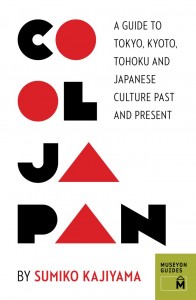
“Cool Japan focuses on giving an inside look into the enduring and captivating qualities of Japan’s culture and history and how it can be discovered by visiting Kyoto, Tokyo, and the Tohoku region.” (Museyon Guides)
By Julio Perez Jr. (Kyoto-shi, 2011-13) for JQ magazine. A bibliophile, writer, translator, and graduate from Columbia University, Julio is currently working at Ishikawa Prefecture’s New York office while seeking opportunities with publications in New York. Follow his enthusiasm for Japan, literature, and board gaming on his blog http://brittlejules.wordpress.com and Twitter @brittlejules.
When was the last time you picked up a non-fiction book and felt like you were escaping to a faraway land? Cool Japan (Museyon Guides) is the special kind of guidebook that does just that.
The author, Sumiko Kajiyama, is a journalist and scriptwriter residing in Japan. Her other books include Ghibli Magic, The Man who Changed Animation Business, The Way of Work by Top Producers, and Important Things to Enjoy Your Work and Life.
In any bookstore you will find Frommer’s, Lonely Planet, and Fodor’s travel guidebooks. You may own a few already from trips you have taken in the past. While these guides are meticulously researched and written to suit a traveler’s needs, there is an inherent problem that they all have in common: over a relatively short amount of time, prices for services or goods can change, hostels can move or go out of business, and new ones can pop up in yet undiscovered places. For these reasons, and many that need not be mentioned, the Internet has become an invaluable tool for anyone planning a trip. Many digital communities of travelers have evolved for the exchange of current information. Furthermore, smartphones allow today’s travelers to access all of this information on the go.
So you may be wondering, why buy a guidebook at all? There are many reasons to buy the ones listed above, despite the weakness of having an ever-decaying reliability of information. Cool Japan is a special because it does not squander space listing information that may no longer be relevant by the time it gets into your hands, but instead Cool Japan focuses on giving an inside look into the enduring and captivating qualities of Japan’s culture and history and how it can be discovered by visiting Kyoto, Tokyo, and the Tohoku region.
JQ Magazine: JQ&A with Jim Breen of Monash University on WWWJDIC
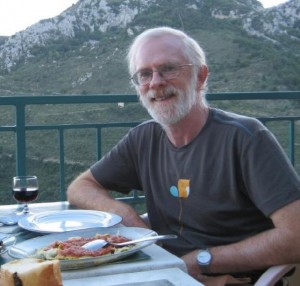
“I just spent several weeks in Finland and Sweden, where the level of English speaking is extremely good. No JET Programmes there. You can’t even argue that they are related languages—Finnish is just as foreign as Japanese, and probably has fewer gairaigo (borrowed words). How do they do it? By teaching it properly in the first place, with trained and qualified teachers.” (Courtesy of Jim Breen)
By Tim Martin (Fukui-ken, 2006-08) for JQ magazine. Tim is a neuroscience researcher and swing dancer based in New York City. He runs a blog called The Floating Lantern, where he writes about humanism and other things that matter. Lately he is trying to learn more about effective altruism and the science of applied rationality.
Jim Breen is the man behind a resource that probably every English speaker trying to learn Japanese has used: the massive WWWJDIC online dictionary. In the 1980s, Breen developed an interest in Japanese that led to him programming a Japanese dictionary for DOS as a hobby. While a professor of digital and data communications at Monash University in Melbourne, Australia, Breen continued working on the dictionary, until eventually it bloomed into an interface that connects and cross-references hundreds of thousands of entries for words, names, and kanji.
Now a recognized authority on lexicography and the Japanese language, Breen continues to work on his “hobby,” and is pursuing a Ph.D. in computational linguistics. In this exclusive interview, JQ spoke with Breen to find out how it all began, his thoughts on language teaching and the JET Programme, and how he thinks technology will affect our experiences with foreign language in the future.
How did you develop your interest in, as you say on your website, “things Japanese”? Is there a specific part of Japanese culture or media that got you hooked?
I guess my interest in Japan over other foreign countries began around 1977 when my eldest daughter, then six years old, began to study the violin using the Suzuki Method. My wife, a musician and music teacher, had heard about the Suzuki Method from a lecture and demonstration, had been extremely impressed, and had expressed an interest in our children studying in the method. From that point on Suzuki began to play an increasingly bigger part of our lives as our second and third children began to study within that method. Also, my wife began to explore teaching in the Suzuki Flute Method.
None of this interest was particularly focussed on Japan itself. In 1980, I took most of the year off work to complete my MBA (I was a budding junior executive in Telecom Australia in those days). A fellow student in our classes had studied Japanese, and impressed me by translating some of the titles of pieces in the Suzuki books. Also among the visiting lecturers was a former trade commissioner in Japan, who spoke eloquently about the importance of Japan and the need for people trained in Japanese. I recall going home that night and saying to my wife: “I think I’d like to study Japanese eventually.” She didn’t think much of the idea, and I concentrated on other things like finishing my MBA and completing a music performance diploma.
In mid-1981, my wife said one day that she thought she really should go to Japan to study teaching Suzuki flute with Toshio Takahashi at the Suzuki headquarters in Matsumoto, as there was no one in Australia teaching Suzuki flute. I liked the idea, and we agreed to go the following December and January, which is Australia’s summer period when schools are closed. Our kids, then aged ten, seven and three, could easily miss a couple of weeks school in December. I arranged two months’ Long Service Leave from Telecom (LSL is a employee right in Australia after you have worked more than 10 years with an employer), and after struggling for a short while with Teach Yourself Japanese (all Kunrei-shiki romaji), I also arranged to have weekly Japanese lessons with Brian Drover, who trained as a Japanese linguist in the Australian army during WWII.
So, in late November 1981, five Breens arrived at Narita, made our way into Tokyo, were popped on a Chuo-sen train to Matsumoto by people from the Suzuki organization, and later that day found ourselves being greeted by a welcoming party from the Nagano Girl Scouts(!). (My eldest daughter was a Brownie, so we had set the international tom-toms working.)
We spent two months in Matsumoto living in two tiny six-mat apartments rented to us by the mother of some local Girl Scouts. My wife had piano and flute pedagogy classes, my kids had lessons in violin and piano (the former with Shinichi Suzuki himself), and I did the housework, shopped, minded kids, tried to study Japanese, etc.
I guess I don’t have any particular parts of Japanese “culture” I concentrate on—my tastes are rather catholic in this regard.
【RocketNews24】Government form allows Japanese romantics to officially declare their love
Posted by Michelle Lynn Dinh (Shimane-ken, Chibu-mura, 2010–13), editor and writer for RocketNews24. The following article was written by Casey Baseel, a writer and translator for RocketNews24, a Japan-based site dedicated to bringing fun and quirky news from Asia to English speaking audiences.

Generally, Japanese culture tends to handle emotional expression a little less directly than in English-speaking countries, especially where romance is concerned. In particular, couples in Japan aren’t nearly as likely to regularly say “I love you” as their Western counterparts are or be seen smooching in public.
In certain situations, though, these roles get flipped. For example, while most Westerners would feel awkward making the explicit statement, “Please be my boyfriend/girlfriend,” in Japan that exact phrase, tsukiatte kudasai, is a pretty common romantic milestone, and something that many actually expect their partner to say in order to explicitly recognize the nature of the relationship.
Now, couples can even have their affection officially recognized, as lovers in Japan can submit government documents certifying their love for each other.
JQ Magazine: Staying On—JETs in Fukushima Share Their Stories
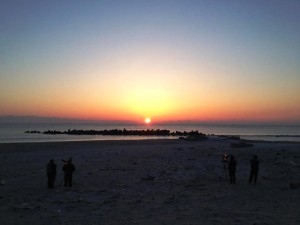
Sunrise over Iwaki: A local pre-dawn commemorative service took place on March 8, 2014, which included taiko performances and ended with the sunrise over the beach near Shinmaikohama Park. (Alexandrea “Xan” Wetherall)
By Eden Law (Fukushima-ken, 2010-11) for JQ magazine. Eden lived and worked in the core city of Iwaki on JET, and he is a current committee member of JETAA NSW, based in Sydney, Australia.
Introduction
It’s been three years since the Great East Japan Earthquake of 2011. While the rest of the world, and arguably, the rest of Japan, has moved on, communities all along the east and north coast continue to endure and deal with the continuing legacy and consequences of that event, especially those displaced from the exclusion zone around TEPCO’s Daiichi plant.
The JET Programme continues to operate, with the government previously announcing plans to double the number of participants over three years. JETs continue to live and work in Tohoku, including JETs who were there before the earthquake, joined later by those placed after 2011. This article will examine the experiences and viewpoints of JETs who continue to work and live in Tohoku, in particular, those living in Iwaki, Fukushima, a city just past the the southern edge of the nuclear exclusion zone. Three years on, they will relate what they’ve seen and observed in their neighbourhood and the city. In addition, the viewpoints of two local Japanese residents will also be included, one from a retired member of a suburb in which evacuees have been housed; and a Japanese English teacher and mother of two.
Before the earthquake, Iwaki was one of the biggest rural cities in Fukushima, with a thriving fishing and farming industry, popular with tourists who come for its natural beauty and well-known beaches. A region rich in history from the Nara period (and prehistory, with its own dinosaur and fossil museums), it also has a famous theme park called the Spa Resort Hawaiians (made famous by the 2006 award-winning film Hula Girls) as well as the Aquamarine Fukushima aquarium. A mere 2.5 hours away from Tokyo by express train, it also supports a large JET community, ideal for those wanting to experience a rural pace with easy access to the bright lights of Tokyo. As a JET placement, it was arguably one of the best places to be.
【RocketNews24】The Japanese universities where graduation is one giant cosplay party【Photos】
Posted by Michelle Lynn Dinh (Shimane-ken, Chibu-mura, 2010–13), editor and writer for RocketNews24. The following article was written by Fran Wrigley, writer and translator for RocketNews24, a Japan-based site dedicated to bringing fun and quirky news from Asia to English speaking audiences.
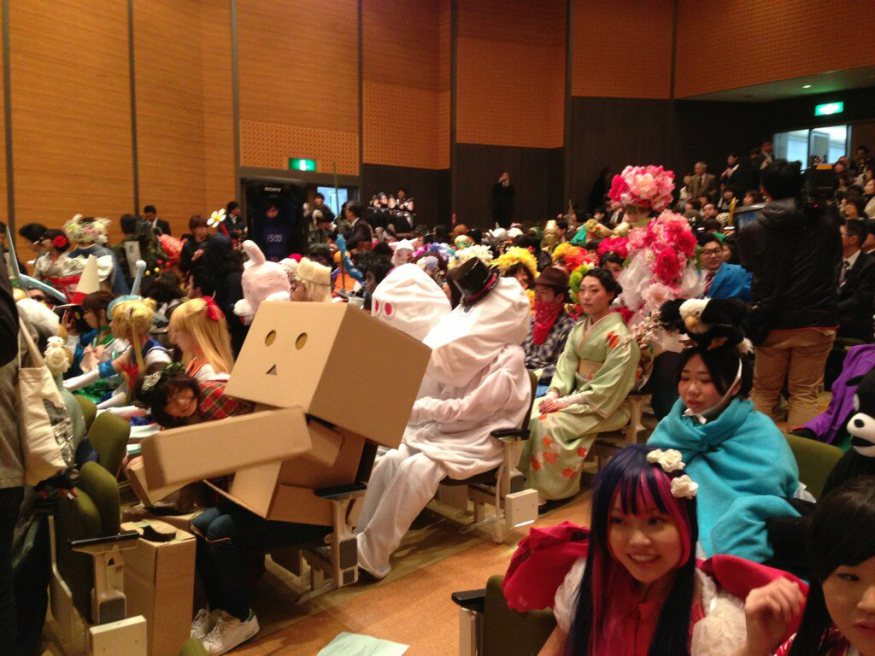
We’ve seen what can happen when high schools relax the rules for yearbook photos. Today, we bring you the Japanese anything-goes graduation! At the Kanazawa College of Art, graduating students can wear anything they want to the ceremony – and they certainly rise to the challenge.
The students’ epic outfits have become such a popular attraction that TV crews even turn up to find and interview the wearers of this year’s best costumes. The effort these students have put into their outfits is really something!
JQ Magazine: JQ&A with Cade Mosley on His Return to Japan with Rotary International
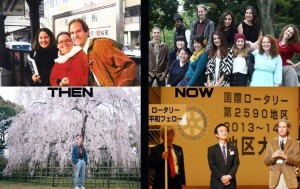
“In my experience, Japan is going through an interesting evolution these days. It’s starting to take a more assertive role in international affairs and taking more of a stand for human rights, development, and peaceful relations. This also makes it a very interesting time for Westerners to be engaged in Japan more than ever before.” (Courtesy of Cade Mosley)
By Mark Flanigan (Nagasaki-ken, 2000-04) for JQ magazine. Mark is a program director at the Japan ICU Foundation in New York City and was also a Rotary Peace Fellow at ICU from 2010-12, during which time he volunteered for a tsunami relief mission in Ishinomaki after the terrible 3/11 tragedy. In addition to his JET and Rotary service, Mark has also been a U.S. Army officer, Presidential Management Fellow, Pacific Forum CSIS Young Leader, Eisaku Sato Memorial Essay Contest prize winner, and Aspen Institute Socrates Program Seminar scholar. His interests lie in international education, disaster response, and post-conflict peacebuilding. He can be contacted at mflanigan[at]jicuf.org.
Christopher Cade Mosley (Nagasaki-ken, 2000-01) is a current Rotary Peace Fellow at International Christian University (ICU) in Tokyo and previously served as a JET for one year. Born in Texas and raised mostly in Fort Worth, Mosley attended the University of Texas at Austin, majoring in government and philosophy. He also spent a semester abroad in Haifa, Israel and interned for Congressional House Majority Leader Dick Armey in Washington, D.C. He was also on student government for their department (Liberal Arts), chairing the committee on study abroad. In this exclusive interview, JQ caught up with Mosley to discuss his lifelong interest in politics and international affairs.
Thanks for your time and for answering our questions, Cade! Would you please tell everyone about your time on JET?
I was a JET in 2000-01 on a long, thin island called Tsushima in Nagasaki, but physically closer to the city of Fukuoka, nestled in the strait between the cities of Pusan and Fukuoka. Tsushima is famous for a decisive sea battle Japan won against Russia in 1905 that first put Japan on the map as a world power and set its course into the 20th century. There’s a massive Russian battleship sunk just off the coast from my apartment there! (Too deep to see, though.) I taught for the second largest district, called Mitsushima, on the south end of the island.
What was your JET role?
I was an ALT at four schools in my district, spending a week in each so that I would rotate through all four in a month. I spent Monday through Thursday assisting the teacher with the lesson, usually coming up with some creative activity or role play to complement the lesson, and Fridays at our BOE.
Did you have any previous background in Asian languages and cultures?
I actually was accepted to JET while I was teaching English in Seoul, South Korea, and my friends there insisted I take the opportunity. Before Seoul, I didn’t have any experience. My whole reason for going to Seoul and applying to JET were because I had zero experience with Asia and thought it would be a good chance to get to know the region, since I was already interested in international affairs at that time.

